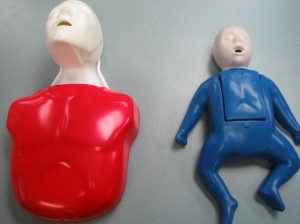Croup is typically the outcome of a viral illness and it affects babies or kids between 3 months and 3 years and hardly ever takes place after the age of 5 years.
Croup is the swelling of the airway in which the voice box becomes narrow by inflammation due to respiratory infection. In more severe situations the airway might close completely, so medical assistance is vital.
An additional type of croup is epiglottitis (swelling of the epiglottis just on top of the larynx), which is usually produced by a bacterial virus. This illness might block the entire airway and usually requires the casualty to remain in hospital, so the medical staff can supervise the child closely.
Croup is generally worse during the night or when the child responds to a rapid change in the weather. In a lot of cases the child might seem to make a complete recovery, but then worsens again during the evening.
Symptoms and Signs (Not all may be present)
- A piercing or screaming sound, particularly when breathing in
- A ruthless, howling cough which then leads to breathing problems
- The lips, mouth or fingers turn blue
- Noticeable breathing problem especially around the ribs
- Neck muscles seem to strain when breathing in
- Seems anxious or nervous
- High fever
Croup is typically the outcome of a viral illness and it affects babies or kids between 3 months and 3 years
When To Get Urgent Medical Help
- Your youngster has trouble breathing
- The effort of breathing is exhausting your child
- Your child starts to turn pale
How You Can Help
- Alleviate the breathing problem
- Support and keep the child calm.
- If the child has a high fever, cool the child.
- Make sure all windows are closed to reduce any draught.
- Let the hot tap run until the bathroom is steamy. Hold the child in the steamy room; this will assist with breathing to clear the airway.
- Try not to get too close to the tap or bath, you don’t want the child to burn.
- Obtain medical assistance and care
- While the child is in a warm environment, the breathing problem should disappear after a few minutes. Even though the child might appear to be healthier, phone a doctor for guidance on additional treatment.
- Make certain that the child remains in a warm room.
- Provide the child with frequent fluids – such as cordials or water – so they don’t become dehydrated.
- If the child does not get better after being placed in the steamy bathroom or a humid environment – phone the medical services for an ambulance.
Related Video On Croup

